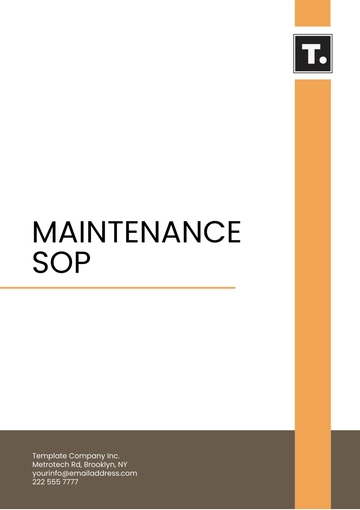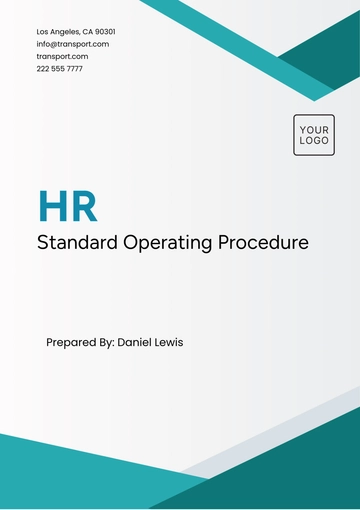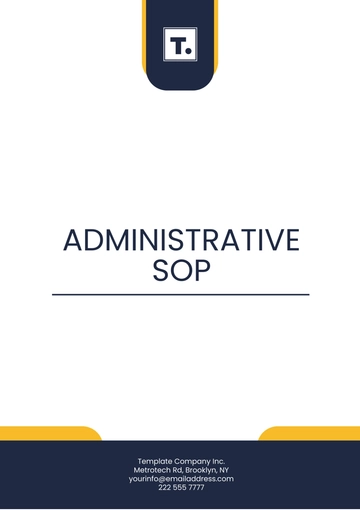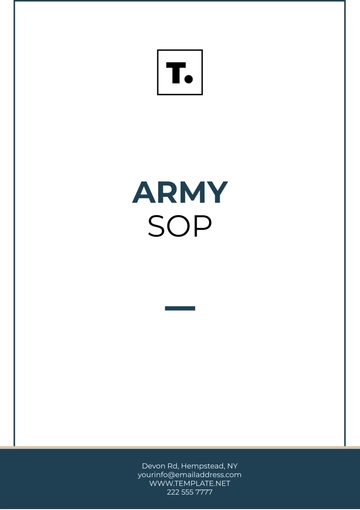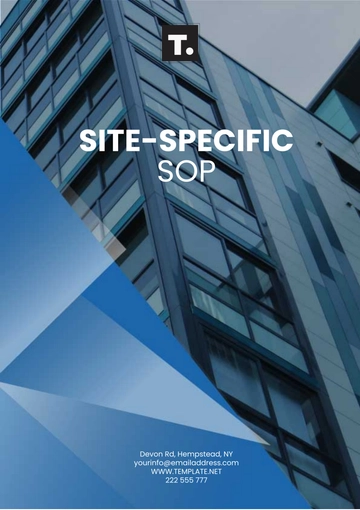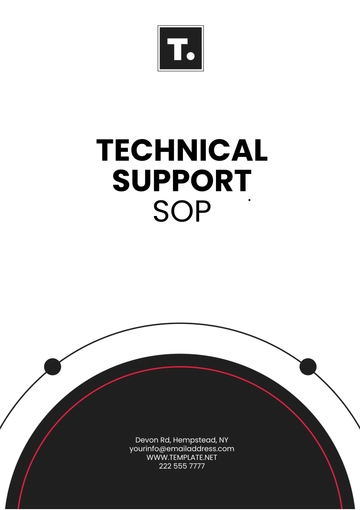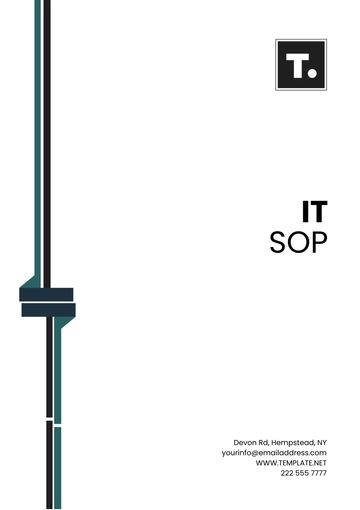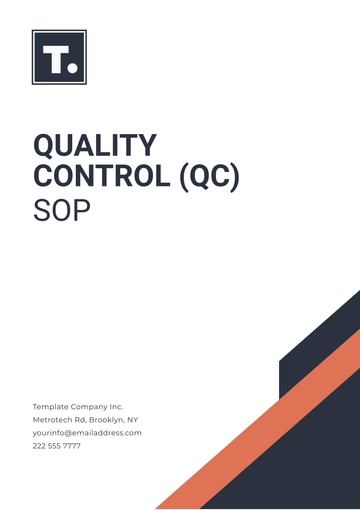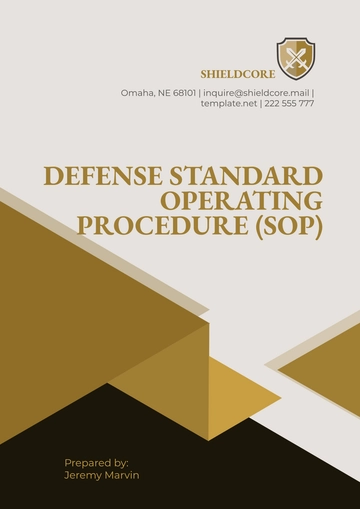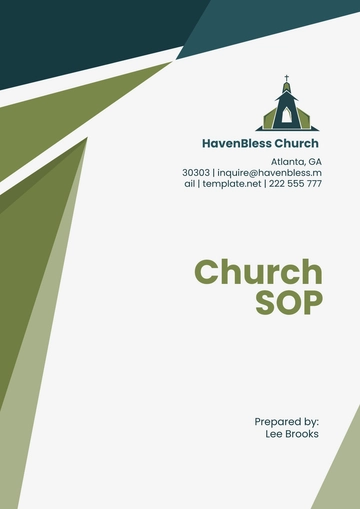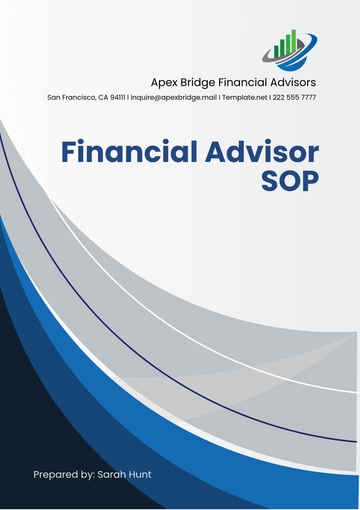Free Aesthetic Church Data Management SOP
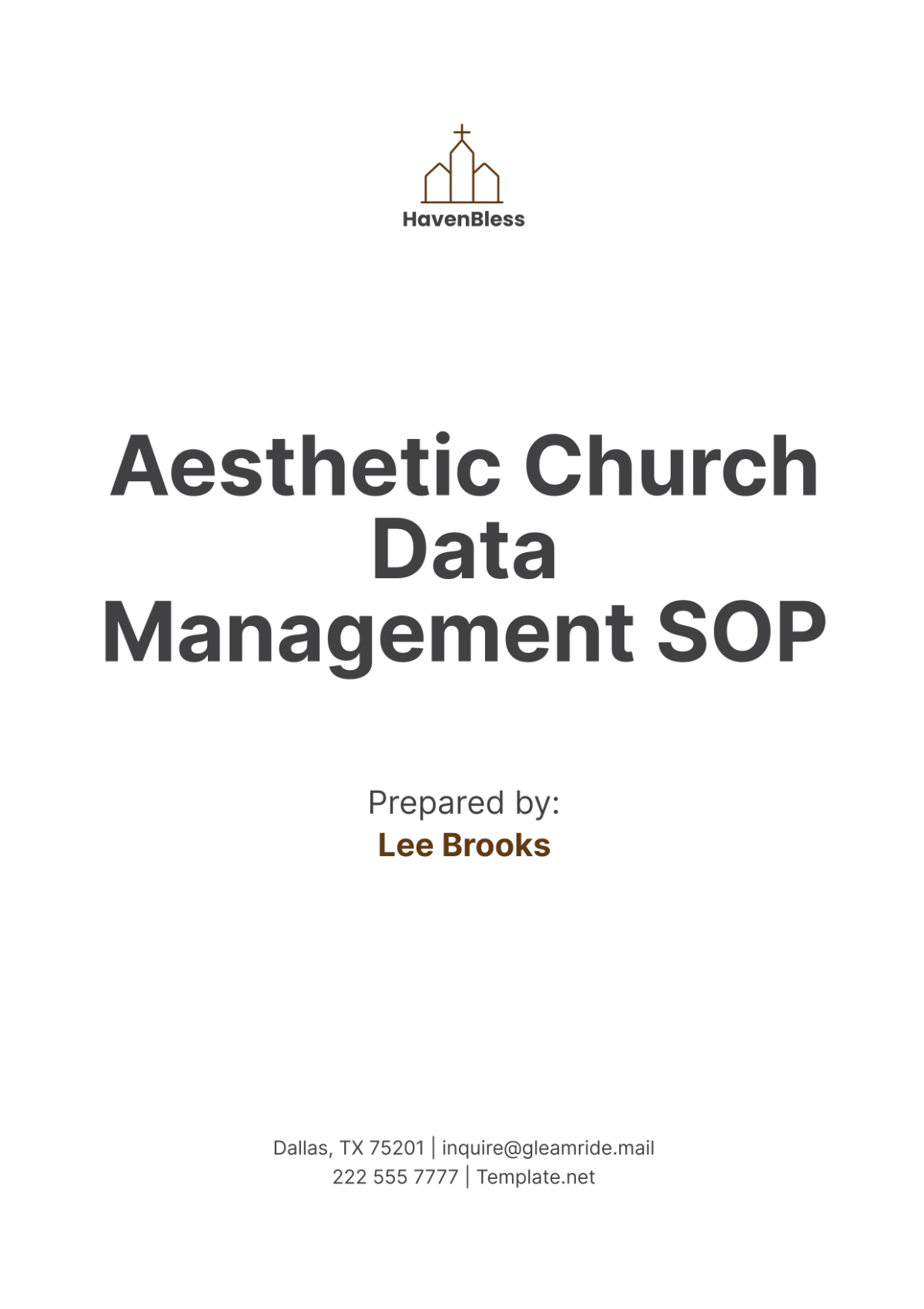
I. Introduction
This Standard Operating Procedure (SOP) establishes the guidelines and protocols for the effective management of data within [Your Company Name]. The SOP is designed to protect the confidentiality, integrity, and availability of information, ensuring compliance with legal standards and maintaining the trust of the church community. It covers the entire lifecycle of data management, including collection, storage, access, usage, and disposal.
II. Data Collection
The collection of data is a foundational process for the church’s operations, enabling informed decision-making and personalized engagement with the community.
A. Purpose of Data Collection
The primary purpose of data collection is to gather relevant and accurate information that supports the church's mission and activities. This includes understanding member demographics, tracking financial contributions, and managing event participation.
B. Types of Data Collected
Personal Information: Includes members' names, contact information, ages, and family details. This data helps in tailoring communications and support services.
Financial Information: Records of donations, tithes, and other financial contributions, crucial for financial planning and transparency.
Event Data: Data related to event attendance, registrations, preferences, and feedback, used to enhance event planning and engagement strategies.
C. Data Collection Methods
Forms: Used in both digital and paper formats for member registration, event sign-ups, and surveys.
Online Platforms: The church's website, mobile apps, and social media are utilized to collect data through forms, feedback mechanisms, and interaction tracking.
Direct Communication: Information obtained through in-person meetings, phone calls, and emails, often used for updating contact details and pastoral care.
D. Consent and Privacy
Consent: Obtaining explicit consent from individuals before collecting their data ensures compliance with privacy laws and builds trust.
Privacy Notice: A clear statement provided to individuals explaining how their data will be used, stored, and protected. This notice is essential for transparency and compliance with data protection regulations.
III. Data Storage
Data storage involves secure systems and practices that protect the church's information assets, ensuring they are available when needed and safeguarded against unauthorized access.
A. Storage Systems
Digital Storage: Utilizes secure servers and cloud storage solutions with encryption and access controls to protect sensitive data.
Physical Storage: Involves the use of secure filing systems for storing physical documents, with access restricted to authorized personnel.
B. Data Backup and Recovery
Regular data backups are conducted to prevent loss of information. Offsite or cloud-based storage is recommended for backups to provide additional security against physical damage or data breaches. A detailed data recovery plan ensures that information can be restored promptly in case of accidental loss or system failure, minimizing operational disruptions.
Backup Type | Frequency | Storage Location | Security Measures | Recovery Time Objective (RTO) |
|---|---|---|---|---|
Full Backup | Weekly | Offsite/cloud storage | Encryption, access controls | 24 hours |
Incremental Backup | Daily | Onsite server, cloud | Encrypted, multi-factor authentication | 4 hours |
Archival Backup | Monthly | Secure offsite location | Physical security, encrypted | 48 hours |
C. Importance of Data Backup and Recovery
Data backups ensure that information is preserved in the event of hardware failure, accidental deletion, or cyber-attacks. This is crucial for maintaining operational continuity and protecting sensitive data.
Data recovery processes are designed to restore data quickly and efficiently, minimizing downtime and the impact on church operations. This involves regular testing of backup systems and procedures to ensure they function as expected.
D. Data Retention
Data retention policies are established based on legal requirements and the church's operational needs. Data is regularly reviewed, and unnecessary or outdated information is securely disposed of to mitigate risks associated with data hoarding.
IV. Data Access and Security
Access to data is controlled and monitored to prevent unauthorized access, ensuring that sensitive information is only available to those with legitimate needs.
A. Access Control
Role-Based Access: Access to data is granted based on the role and responsibilities of church staff, ensuring that only authorized personnel can access sensitive information.
Authentication: Strong authentication protocols, such as passwords and two-factor authentication, are used to verify the identity of individuals accessing the system.
Role | Access Level | Data Accessible | Authorization Required |
|---|---|---|---|
Senior Pastor | Full Access | All member, financial, and operational data | Board Approval |
Financial Officer | Financial Data Access | Donation records, financial transactions | Finance Committee Approval |
Administrative Staff | Limited Access | Member contact details, event data | Department Head Approval |
Volunteer Coordinators | Event and Volunteer Data | Volunteer contact details, event participation records | Event Coordinator Approval |
IT Personnel | Technical Data Access | System logs, user accounts, data backups | IT Director Approval |
B. Data Security Measures
Data security includes encryption, regular updates to software and security protocols, and physical security measures to protect against unauthorized access and data breaches.
C. Monitoring and Auditing
Continuous monitoring and auditing of data access and usage help identify potential security threats and ensure compliance with the SOP. Logs are maintained for all access attempts and modifications to data, providing a detailed audit trail.
V. Data Usage
Data usage guidelines ensure that the information collected and stored by the church is used ethically and in accordance with stated purposes.
A. Data Usage Policy
Data is utilized strictly for the purposes it was collected, such as enhancing member engagement, improving church services, and supporting administrative functions. Any use of data outside these parameters requires explicit consent and must comply with legal regulations.
B. Communication and Outreach
Member data is used to personalize communication, such as newsletters, event invitations, and announcements. The church strives to maintain a balance between informative outreach and respect for members' privacy.
Communication Type | Data Used | Purpose | Frequency |
|---|---|---|---|
Newsletters | Email addresses, names | Informing members about events, news, and updates | Monthly |
Event Invitations | Contact details, interest data | Inviting members to church events and programs | As needed |
Donation Acknowledgements | Financial data, names | Thanking donors and providing tax receipts | Quarterly, annually |
Surveys and Feedback | Contact details, responses | Gathering feedback for improving services | Post-event, annually |
Emergency Notifications | Contact details | Communicating urgent information | As needed |
C. Anonymization and Aggregation
To protect privacy, personal data is anonymized and aggregated when used for reporting or research. This process ensures individual identities are not disclosed.
VI. Data Disposal
Proper disposal of data is essential to prevent unauthorized access to sensitive information that is no longer needed.
A. Disposal of Digital Data
Digital data is securely erased using methods such as data wiping software or degaussing, ensuring it cannot be recovered.
B. Disposal of Physical Data
Physical documents are shredded or incinerated to ensure that sensitive information is irretrievably destroyed.
C. Certification of Disposal
Detailed records of data disposal activities are maintained, including the date, method of disposal, and personnel involved. This ensures accountability and compliance with data protection policies.
VII. Conclusion
This SOP provides a comprehensive framework for the management of data within [Your Company Name], promoting security, transparency, and accountability. Regular review and adherence to these guidelines are essential for maintaining the integrity of the church's data management practices, ensuring that all information is handled responsibly and ethically.
- 100% Customizable, free editor
- Access 1 Million+ Templates, photo’s & graphics
- Download or share as a template
- Click and replace photos, graphics, text, backgrounds
- Resize, crop, AI write & more
- Access advanced editor
Manage data effectively with the Aesthetic Church Data Management SOP Template from Template.net. This editable and customizable template features an elegant and detailed design, perfect for outlining data management procedures within the church. The layout includes sections for data handling procedures, security measures, and compliance guidelines, ensuring a comprehensive and well-organized SOP.




